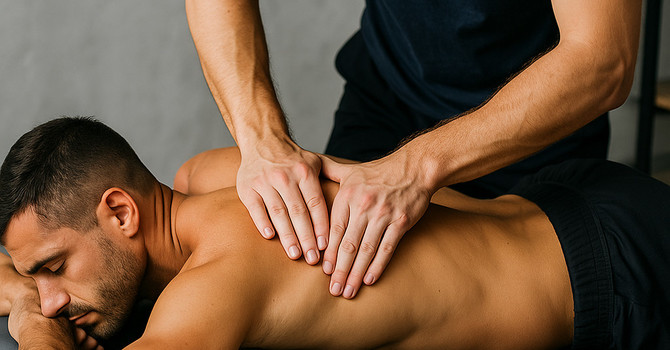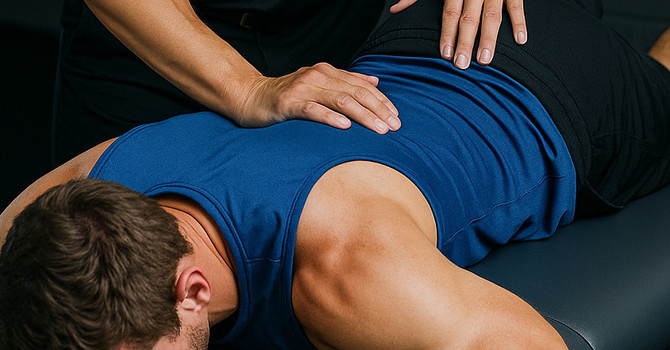
Overview
Scoliosis happens when the spine curves sideways instead of staying in a normal vertical line. This curve is often combined with the spine twisting around, making it look like an S or C shape. Physicians usually consider it scoliosis when the curve measures at least 10 degrees on an x-ray taken from the back.2 There are different reasons why scoliosis might occur, like being born with spine abnormalities, having muscle or nerve issues, or being part of certain syndromes.2 In more than 80% of scoliosis cases, physicians can't pinpoint the exact cause (this is called idiopathic scoliosis).3 How scoliosis develops and what treatments are best depend on what's causing it and when it shows up. To figure out the best way to manage a person’s scoliosis, physicians would need to gather information from their medical history, perform a physical examination, and review x-rays when initially assessing scoliosis.2
What are the different types of scoliosis?
Scoliosis is a complex condition with various underlying causes and manifestations. Understanding its pathophysiology is crucial in guiding treatment and management strategies.
Functional scoliosis occurs when factors like having one leg longer than the other or unequal muscle pull affect the spine. This type can often be corrected with stretches, joint mobilization, strengthening exercises, and retraining one’s posture.
Structural scoliosis, on the other hand, alters the spine’s structure and is typically deemed permanent unless treated. Sometimes, wearing a special brace or even surgery might be needed to help straighten the spine. Idiopathic scoliosis is the most common type and appears without a clear cause, often in adolescents. There are also juvenile and infantile scoliosis, affecting younger kids. Juvenile scoliosis is more common in girls and can stick around into adulthood, while infantile scoliosis, seen more in boys, usually gets better on its own. Additionally, scoliosis can be caused by birth defects, certain medical conditions like Marfan’s syndrome, or even injuries or tumours. Understanding these different types helps physicians figure out the best ways to treat each person's scoliosis.6
What are the signs and symptoms of scoliosis?
Below are the typical signs of scoliosis, although they can vary from person to person:
- One shoulder being higher than the other
- The head not being centred with the body
- Difference in hip height or position
- One shoulder blade being higher or sticking out more
- Arms hanging differently when standing straight
- Unevenness in the height of the back when bending forward
- Noticeable rib prominence or unevenness from the front or back
These symptoms might be similar to other spine issues or injuries. If you experience any of these signs, it's important to see a physician for a proper diagnosis.
Uncommon symptoms of scoliosis include back pain, leg pain, and changes in bowel or bladder habits. If you have these symptoms, it's essential to seek immediate medical attention to determine their cause.3
How is scoliosis diagnosed?
Scoliosis is usually checked through a few different ways: a physical exam, x-rays, or special scans like CT scans or MRIs. Physicians can measure the scoliotic curve on imaging scans by using the Cobb method (Cobb Angle) to quantify how much the spine curves. They consider a curve of more than 10 degrees a sign of scoliosis. If it's bigger than 25 to 30 degrees, it's seen as significant. And if it's more than 40 to 50 degrees, it's considered severe and might need extensive treatment.1
One common test for scoliosis is called the Adam's Forward Bend Test.5 During this test, the person bends forward at the waist with their feet together.5 This helps the physician see if there's any unevenness in the back that might suggest scoliosis. However, this test alone can't tell exactly what kind of scoliosis someone has or how serious it is.5 For that, they need special scans:
X-ray: Simple x-rays can verify if someone has scoliosis and show how severe the curve in their spine is.4
CT scan: This imaging technique combines x-rays with computer technology to produce detailed horizontal images (slices) of the body, providing detailed views of bones, muscles, organs, and other structures. CT scans offer more detailed images compared to standard x-rays.3
MRI: This diagnostic method involves powerful magnets and computer technology to create detailed images of body structures and organs.3
How is scoliosis treated?
The goal of treatment is to stop the curve in the spine from getting worse and avoid any changes in the body shape. For people with small curves (less than 20 degrees) who are still growing, physicians might just keep an eye on it through regular check-ups, without doing anything unless it gets worse.3
If a child's curve is between 20 and 50 degrees and they're still growing, wearing a special torso brace called a thoracolumbosacral orthosis (TLSO) can help.3 This brace is worn for a set number of hours each day and helps push the spine in the right direction as the child grows, stopping the curve from getting worse.3 Notably, a meta-analysis by Rowe et al. underscores the effectiveness of bracing, with longer durations showing higher success rates, although potential complications exist.6
In more serious cases, like when the curve is over 50 degrees or causing a lot of problems, surgery might be needed.3 Although surgery may be necessary for curves exceeding 50°, conservative measures can still play a supportive role pre- and post-surgery, alleviating symptoms and facilitating recovery.6 Conservative measures such as chiropractic care, massage therapy, athletic therapy, and even seeking care from nurse practitioners can all play an important role in treating scoliosis. While they may not provide primary medical interventions like surgery, they offer valuable complementary therapies that can help manage symptoms, improve mobility, and enhance overall well-being for individuals with scoliosis.
Chiropractors are experts of the spine, muscle, joint and related nervous system. Trained to evaluate, diagnose, recommend and deliver a treatment plan according to your preferences. A chiropractor’s education includes courses in radiology, pain management, prescribed exercise and rehabilitation, among others. For individuals with scoliosis, chiropractic care can focus on improving spinal mobility, reducing pain, and identifying factors that may contribute to discomfort. Additionally, chiropractors aim to alleviate symptoms and improve spinal health, potentially slowing the progression of the curve and enhancing quality of life. Your chiropractor can order x-rays determine or monitor the curvature of the spine.
Massage therapists can offer various manual techniques to address muscle tightness, tension, and imbalances associated with scoliosis. By targeting specific areas of tightness and restriction, massage therapy can help relieve discomfort, improve circulation, and enhance muscle flexibility and range of motion.
Athletic therapists specialize in musculoskeletal rehabilitation and exercise prescription. For individuals with scoliosis, athletic therapy can involve designing customized exercise programs to strengthen muscles, improve posture, and enhance overall physical function. By focusing on functional movement patterns and biomechanics, athletic therapists can help individuals with scoliosis optimize their physical performance and minimize the impact of the condition on their daily activities.
Nurse practitioners can provide comprehensive care to individuals across the lifespan. In the context of scoliosis treatment, nurse practitioners can play a key role in coordinating care, monitoring disease progression, and facilitating access to appropriate resources and interventions. Additionally, nurse practitioners can provide access to quality client care and are authorized to diagnose, order, and interpret diagnostic tests, such as imaging scans.
To learn more about how scoliosis can be treated or to determine if you have scoliosis, book a complimentary discovery call with one of our healthcare practitioners today!
References
- Horng, M.-H., Kuok, C.-P., Fu, M.-J., Lin, C.-J., & Sun, Y.-N. (2019). Cobb Angle Measurement of Spine from X-Ray Images Using Convolutional Neural Network. Computational and Mathematical Methods in Medicine, 2019, 6357171–18. https://doi.org/10.1155/2019/6357171
- Janicki, J. A., & Alman, B. (2007). Scoliosis: Review of diagnosis and treatment. Paediatrics & Child Health, 12(9), 771–776. https://doi.org/10.1093/pch/12.9.771
- Johns Hopkins Medicine. (n.d.). Scoliosis. Johns Hopkins Medicine. https://www.hopkinsmedicine.org/health/conditions-and-diseases/scoliosis
- Mayo Clinic. (2023, May 13). Scoliosis. https://www.mayoclinic.org/diseases-conditions/scoliosis/diagnosis-treatment/drc-20350721
- Phan, M. K. (2022, October 6). What is the adams forward bend test?. HealthCentral. https://www.healthcentral.com/condition/scoliosis/adams-forward-bend-test
- Vizniak, N. A. (2021). Scoliosis. In Evidence-Informed Massage Therapy (2nd ed., pp. 610–613). Professional Health Systems Inc.

HealthyToDos Inc.
Contact Me


